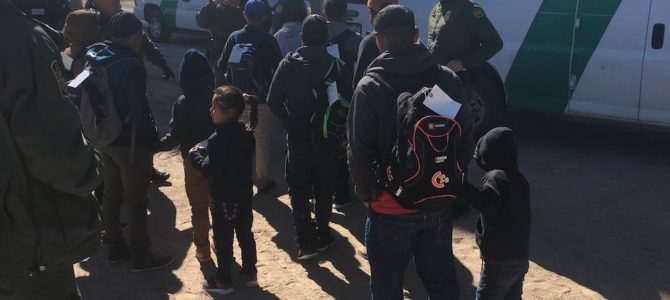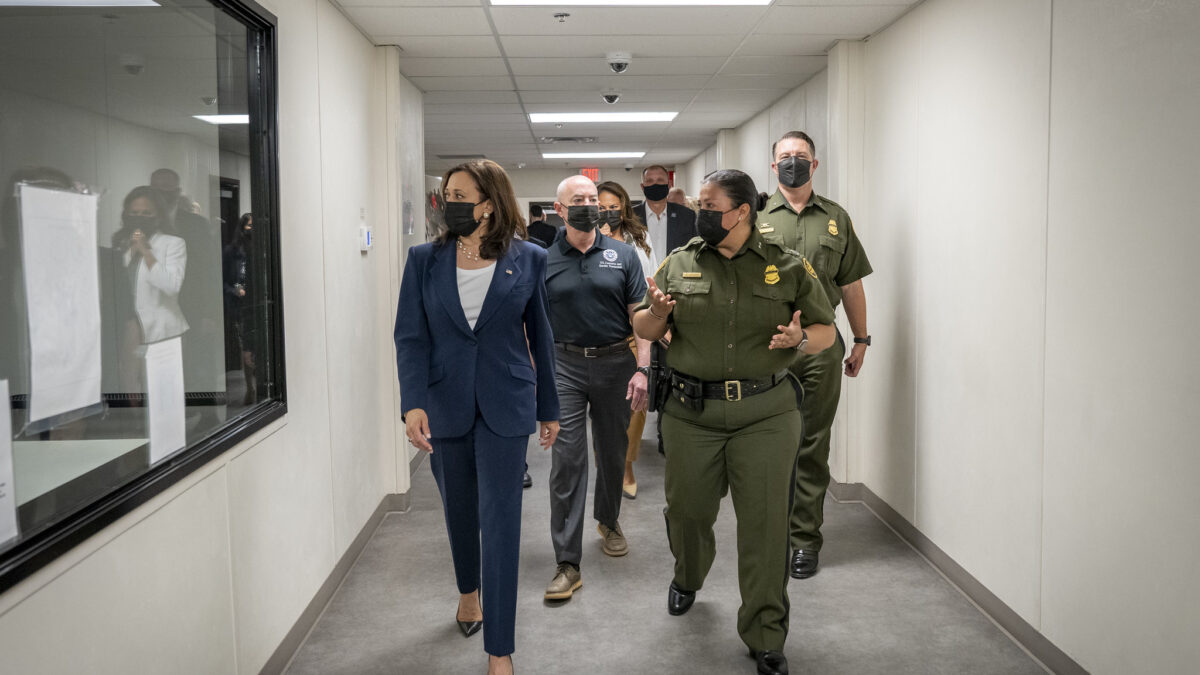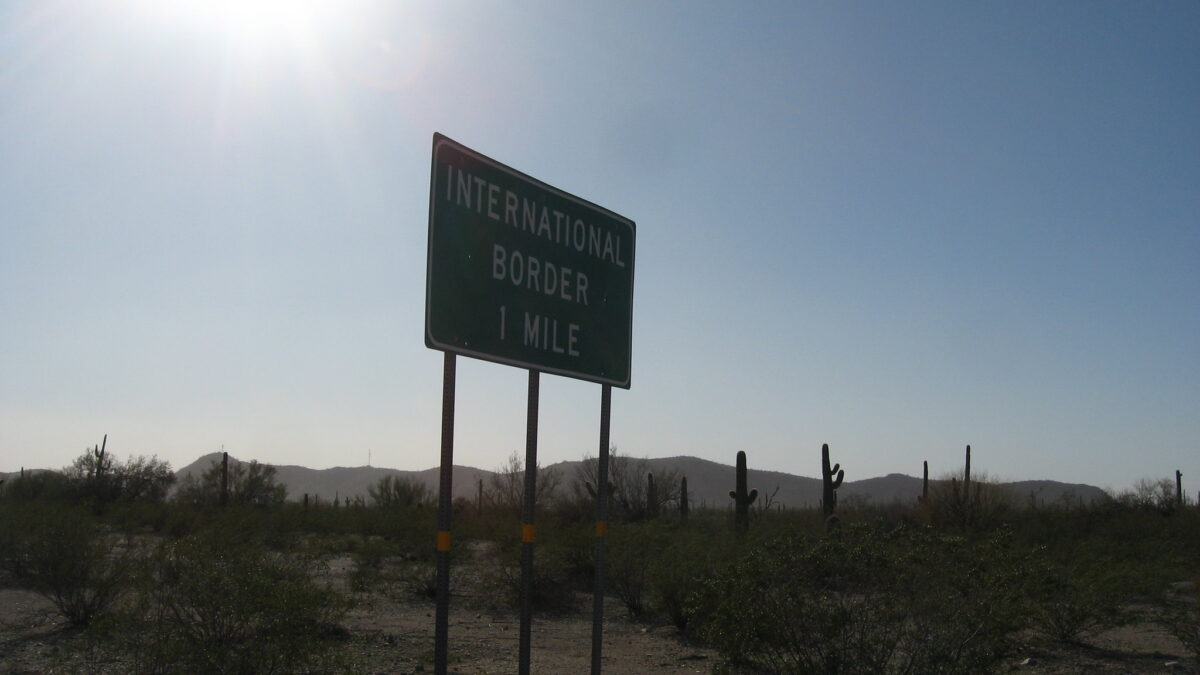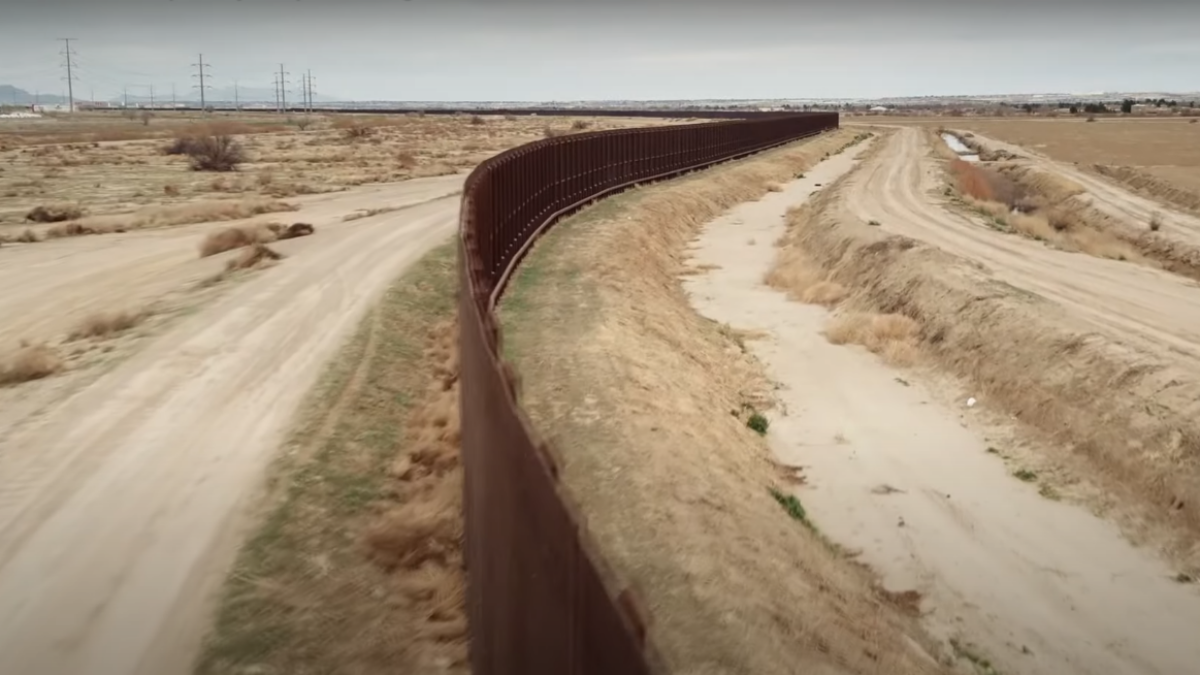
On the evening of March 20 in Eagle Pass, Texas, a small town on the U.S.-Mexico border about 150 miles west of San Antonio, U.S. Border Patrol agents on riverine patrol were flagged down by people on the Mexican side of the river. They alerted the agents to a woman and her two small children, a boy and a girl, lying unconscious on a sandbar near the south side of the riverbank.
The agents, with the help of Eagle Pass Fire Department EMTs, were able to resuscitate the woman and the boy, a toddler, who was hypothermic and semi-conscious by the time Border Patrol got him safely to shore. But the other child, a nine-year-old girl, was dead.
“We tried everything to bring her back. We tried for 20 or 30 minutes,” said Eagle Pass Fire Chief Manuel Mello when I reached him by phone on Monday. The waters of the Rio Grande are cold this time of year, he said, in the low sixties at sundown, and deceptively fast-moving in places.
They pronounced the girl dead right there on the riverbank. The boy was taken to a hospital in San Antonio, and, as far as Mello knows, his mother went with him. Mello said there was no sign of other migrants in the area or a group they might have been with. “It was just those three.”
It’s unclear how the woman, a Guatemalan national, and her children, both Mexican, came to be unconscious on that sandbar. It’s also unclear who flagged down Border Patrol from Piedras Negras, the Mexican town that faces Eagle Pass.
This didn’t happen in a remote area of the border, but close to the two international bridges and ports of entry downtown. So it could have been anyone, possibly even cartel-associated smugglers who have been ferrying migrants across the river at a feverish pace these past two months.
Not All Rio Grande Drownings Are Treated The Same
The story of the little girl’s death was widely, although cursorily, reported after U.S. Customs and Border Protection issued a statement on March 25. But it didn’t garner the kind of media attention nor gin up the kind of outrage that similarly tragic migrant deaths got during the Trump administration.
When a Salvadoran migrant, Óscar Alberto Martínez Ramírez, and his nearly-2-year-old daughter, Valeria, were found dead on the north bank of the Rio Grande in June 2019, Democrats and many in the media rent their garments and blamed Trump. A heartbreaking picture of the drowned father and daughter, face down among matted reeds in the muddy riverbank, the girl’s little arm thrown over her father’s neck, understandably shocked the world.
But for many others, it was an opportunity to play politics and attack Trump. “This photo of a dead father and daughter shows the true nature of Trump’s immigration policy,” crowed a headline at Vox. “Trump is responsible for these deaths,” Beto O’Rourke wrote on Twitter. Sen. Cory Booker said something similar. Then-Sen. Kamala Harris called Trump’s border policies “inhumane” and “a stain on our moral conscience.”
All these people are now silent about the nine-year-old girl who drowned on March 20. Maybe it’s because there was no photo of the dead girl to rip our guts out. Maybe it’s because Trump’s not around to take the blame. Maybe it’s both.
But the incuriosity—not just about this girl’s death but about the border crisis generally—among Democrats and too many in the corporate press is becoming more obvious as the situation worsens. Beat reporters at the Washington Post and Los Angeles Times are doing yeoman’s work covering the crisis, but almost no one else wants to talk about it.
If they do, it’s to push back on the characterization of this as a crisis, or, as PBS’s Yamiche Alcindor did at President Biden’s first press briefing last week, muse aloud about whether all these migrants are coming because Biden is such a moral, decent man. Meanwhile, smugglers are throwing six-month-old babies into the Rio Grande, and stranding infants on sandbars, and Border Patrol agents, together with local authorities, are performing heroic feats to save as many as they can.
As The Crisis Deepens, Biden Is Trying To Hide It
The simpering incuriosity of the press about all this is appalling on its own, but it’s made worse because it comes as the Biden administration maintains a near-total media blackout at the border. For the first time on Tuesday, the administration allowed a press pool into the tent facility for migrant youths in Donna, Texas, which is 1,700 percent over its pandemic capacity. For a brief time, chaperoned reporters got an up-close glimpse of the overcrowded plastic “pods” where CBP is keeping these kids. One pod designed to hold 32 kids was holding 615.
More than 2000 migrants at the temporary processing facility in Donna, TX have been here for over the legal limit of 72 hours.
Senior CBP officials told reporters more than 1200 migrants are processed and waiting to be transferred to HHS facilities. HHS has nowhere to put them. pic.twitter.com/l3YVDKsg1Z
— Nicole Sganga (@NicoleSganga) March 30, 2021
No wonder the president has been trying to hide this from the American people. But you might expect the corporate press to have made more of an issue out of it than they have thus far.
For the most part, top editors and pundits with massive platforms have been quiescent, not just about the border crisis but about the press restrictions on covering it. Had Trump tried something like this, you can imagine the pandemonium that would ensue at every White House press briefing.
Because the Biden administration will still not allow any media ride-alongs with Border Patrol agents, will allow almost no one into the migrant processing facilities or youth shelters, and will not even allow local CBP press officers to answer questions from the media or speak candidly to reporters about what’s happening on the border, it’s hard to get a clear picture of what’s happening, the scale and scope of it, and assess the federal response.
Even so, the blackout isn’t quite working. Reporters are going to the border on their own and encountering migrant groups, documenting the crisis, and in some cases encountering resistance from local law enforcement, which in some cases are reportedly under orders from CBP to expel journalists from areas where migrants are crossing:
I respectfully ask the White House to stop the media border ban. I took these photos of migrants walking up from the border. I was later removed by local law enforcement, saying they were under orders from US Customs and Border Protection. #gettyimages #mediaborderban pic.twitter.com/5Kbax8VU3w
— John Moore (@jbmoorephoto) March 25, 2021
Congressional delegations also keep going to the border and documenting conditions there, releasing photos and footage of migrant processing facilities that few journalists have been allowed to see (the delegations keep requesting media embeds and the Biden administration keeps denying them). And it’s not just Republicans. Democratic Rep. Harry Cuellar, whose district includes a wide swath of the border in the Rio Grande Valley, was the first to release leaked images of a severely overcrowded youth detention tent facility in Donna, Texas, which is now about 1,700 percent over its pandemic-rated capacity.
In addition, officials inside the government keep leaking information. Axios reported Sunday that the administration now anticipates the number of unaccompanied minors crossing the border could be as high as 25,000 in May, and might remain at that level until September—a seven-month surge.
To give you a sense of what that means, the previous all-time record for migrant minors apprehended at the border was 11,475 in May 2019. This month broke that record, with more than 16,000 taken into federal custody. The number of children now being held in crude CBP facilities, which one CBP union official described as a “designed kind of like a drunk tank,” is more than double the previous record set in June 2019 under the Trump administration.
The number of unaccompanied migrant children stranded in Border Patrol custody has continued to climb, with more than 5,700 held in its short-term holding facilities as of this morning.
HHS said today it was housing 13,100 migrant children in shelters and emergency sites. pic.twitter.com/KltOZhO1Ug
— Camilo Montoya-Galvez (@camiloreports) March 29, 2021
So no wonder the Biden administration is trying, clumsily, to hide all this. They know it’s a disaster, a humanitarian catastrophe that’s getting worse by the day, spiraling out of control. How bad are things going to get?
Well, the administration this week called for volunteers to help process kids at the border. The Department of Health and Human Services, which takes custody of unaccompanied minors after they’re transferred from CBP custody, is asking federal workers to volunteer for 120-day deployments at the border. The HHS job posting states that temporary border workers will “maintain line of sight and supervision of children,” “assess the needs of unaccompanied children in care,” and “interview unaccompanied children in CBP custody and collect contact information for parents in the home country and family members in the U.S.”
What all that means, straightforwardly, is that there are so many children in federal custody right now that HHS and CBP can’t even look after them properly, let alone figure out whether anyone in the United States can provide them a safe home.
Listen To What Locals Are Saying
When I asked for details about the little girl who drowned, a U.S. Customs and Border Protection spokesman in Washington, D.C., issued a curt statement reiterating previously released information. To my surprise, a public affairs officer at CBP’s Del Rio sector headquarters got back to me (the Biden administration’s unofficial gag order requires that all press inquiries go through CBP brass in Washington) but the information the officer provided was bare bones.
One detail jumped out, though: through February of this fiscal year, there have been 32 migrant deaths in the Del Rio sector, which is by no means the busiest stretch of the southwest border. I asked Chief Mello about the deaths, since Border Patrol and CBP work with local law enforcement all up and down the border, and always call them in when a migrant dies or is found dead.
Mello told me the situation in Eagle Pass right now is very unusual. In normal times, his office might get a call from Border Patrol once a month for EMS assistance with a migrant in distress or unresponsive. For the past two months, though, they’ve been getting one or two calls every week. He said they typically get called by Border Patrol to recover bodies maybe ten times a year, but have gotten a half-dozen such calls just in the past month.
When I asked him for details of the March 20 call from Border Patrol about the mother and two children, it took him a minute to pull up the file because his deputy thought he was asking about another migrant death, the body of an adult man from Central America recovered last Friday. CBP never issued a statement about that, and no one wrote about it in the press. Like the nine-year-old girl who drowned and dozens of others who have died in recent months, the man will likely remain nameless in the face of indifferent press corps, a dissimulating administration, and a spiraling crisis at the border.









